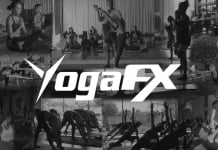At YogaFX, we are dedicated to providing a life-changing yoga teacher training experience, and nothing makes us prouder than hearing feedback like this:
“Excellent!”
A single word, yet it captures the quality, impact, and transformation that students experience during our training. So, what makes YogaFX truly excellent? Let’s explore why students rate us five stars and why this journey is so powerful.
A Structured and Effective Training Program
YogaFX isn’t just about practicing yoga—it’s about mastering it. Our program is designed to ensure students leave with:
- A deep understanding of Bikram Hot 26&2 Yoga.
- The skills and confidence to teach yoga anywhere in the world.
- A strong, flexible, and more balanced body and mind.
Through a step-by-step approach, students build their practice from the ground up, making steady progress each day.
The Power of Expert Instruction
A training program is only as good as its teachers, and at YogaFX, our instructors bring:
- Years of experience and deep knowledge of yoga.
- Clear, structured guidance to help students improve quickly.
- Encouragement and personalized feedback to push students to their best.
A great teacher makes learning exciting, challenging, and rewarding—that’s what makes YogaFX an excellent experience.
Hot Yoga: A Practice That Transforms
Practicing in a heated environment amplifies the benefits of yoga. At YogaFX, students train in a way that helps them:
- Increase flexibility and prevent injuries.
- Strengthen endurance and mental focus.
- Detoxify the body and improve overall health.
For many students, this challenging yet deeply rewarding practice is what makes them say “Excellent!” at the end of their journey.
A Supportive and Motivating Community
YogaFX isn’t just a training—it’s a place where students:
- Connect with like-minded yogis from around the world.
- Encourage each other through every challenge.
- Celebrate each victory, no matter how small.
This uplifting and positive environment ensures that every student feels supported, motivated, and inspired.
Training in the Beauty of Bali
Bali is the perfect setting for an immersive yoga experience. The natural surroundings, peaceful atmosphere, and vibrant culture make every moment feel refreshing and energizing.
Training in Bali allows students to:
- Fully focus on their growth without distractions.
- Immerse themselves in a retreat-like environment.
- Experience a deeper connection to yoga and nature.
It’s more than just a course—it’s a once-in-a-lifetime experience that stays with students forever.
A Certification That Opens Doors
Graduating from YogaFX means leaving with:
- A Yoga Alliance Certification recognized worldwide.
- The ability to teach and inspire others with confidence.
- A new perspective on yoga, movement, and life.
This isn’t just about getting certified—it’s about becoming the best version of yourself.
Ready for an Excellent Yoga Journey?
If you’re looking for a yoga teacher training that is structured, inspiring, and truly life-changing, YogaFX is the perfect place to start.
Join us and experience why students say:
“Excellent!”
Your transformation begins now. Are you ready?
Join Our Yoga Teacher Training And Main Event











































